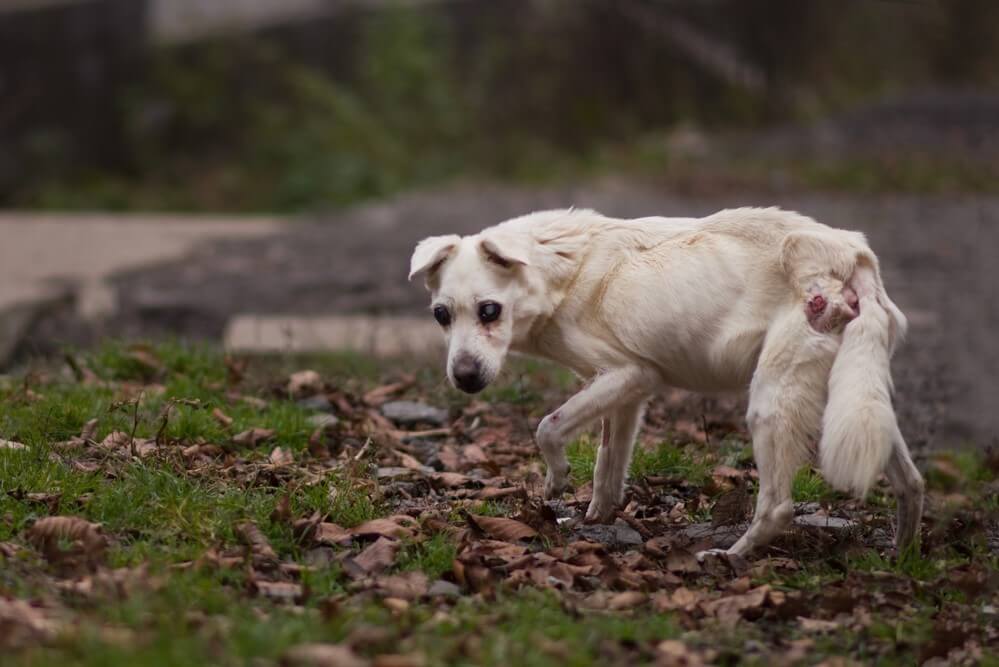Introduction
Anal sac cancer in dogs is a critical health concern among dog owners. These scent glands, positioned adjacent to the anus, secrete a distinctive odor, aiding in territory marking. However, when cancer develops in these glands, it necessitates immediate medical attention due to its potential severity.
Anatomy and Function of Anal Sacs
The anal sacs, a pair of scent glands situated alongside the anus, produce an odorous secretion used for territorial marking during bowel movements. While dogs and cats can function normally without these glands, their role in scent communication is notable.

Understanding Anal Sac Cancer Spread
While cats rarely experience this condition, anal sac cancer is a predominant concern in dogs. Typically, this tumor affects one anal sac but can occasionally involve both. With a high malignant tendency, this cancer has an alarming propensity to metastasize, commonly affecting regional lymph nodes, the liver, and potentially spreading to the lungs.
Identifying Signs and Diagnosis
Detecting anal sac cancer may not be evident at home, but a veterinarian may identify an anal sac mass during a routine examination. Observable signs might include visible swelling in the anal region, difficulty passing waste, altered stool shape, urinary challenges, and arching of the back. Moreover, the tumor can lead to elevated blood calcium levels, manifesting as increased thirst, frequent urination, reduced activity, loss of appetite, weight loss, vomiting, muscle weakness, and a decreased heart rate.
Recommeded
- Petco Review: The Power of Together
- PetSmart Review: Where Pets Inspire Us
- Hill’s Pet Nutrition Review: Pioneering Pet Health and Nutrition
- Royal Canin Review: Tailored Nutrition for Every Pet
- Chewy Review: Pet Care at Your Doorstep
Diagnostic Approaches
Diagnosis primarily involves digital rectal palpation by a veterinarian, with a biopsy confirming the tumor type, often post-tumor removal. Pre-surgery tests, including blood count, chemistry profile, and urinalysis, assess internal organ health. Chest X-rays and abdominal ultrasound reveal visible cancer spread, although microscopic dissemination to other organs remains undetectable through these methods.

Treatment Modalities
Treatment hinges on the extent of cancer spread. Surgical removal of the anal sac and the tumor is recommended and has shown improved survival rates while alleviating clinical signs associated with the tumor.
If metastasis to organs like the lungs or liver occurs, surgery may serve as a palliative measure. Enlarged abdominal lymph nodes may warrant removal, with chemotherapy sometimes preceding surgery to shrink nodes for safe extraction.
Chemotherapy, usually recommended for malignant tumors, minimally impacts dogs, with mild side effects like transient appetite loss and vomiting. Additionally, radiation therapy may be used to shrink inoperable tumors, though it might lead to temporary or permanent skin burns and colon irritation.
Conclusion
Anal sac cancer demands vigilant attention, prompt diagnosis, and tailored treatment strategies. Collaborative efforts between pet owners and veterinary professionals are crucial in ensuring optimal care and enhancing the prognosis for dogs afflicted by this challenging condition.
References
- McEntee MC. “Anal sac gland adenocarcinoma in the dog.” Veterinary Pathology. 1976; 13(1): 61-68
- Keller SM, Gookin JL. “Surgical Management of Perianal Tumors in Dogs.” Veterinary Clinics of North America: Small Animal Practice. 2018; 48(5): 903-922.
- Burton G, Meuten D. “Tumors of the Integumentary System.” In: Meuten DJ, ed. “Tumors in Domestic Animals.” 5th ed. Wiley-Blackwell; 2016.
- Bacci B, Merveille AC, Jourdan G, et al. “Anal Sac Adenocarcinoma in Dogs: Survival and Prognostic Factors.” Veterinary Surgery. 2020; 49(6): 1222-1230.
- Manley CA, Leibman NF, Wolchok JC, et al. “Anal Sac Adenocarcinoma in Dogs: A Review.” Topics in Companion Animal Medicine. 2017; 32(3): 89-94.
- Fernandez NJ, Hahn KA, Cline JM. “The relationship between lymph node size and metastasis in dogs with oral and maxillofacial sarcomas: a retrospective study of 80 cases.” Veterinary Surgery. 2009; 38(4): 425-430.
- Hume C, Seim HB 3rd, Field C, et al. “Predictors of Outcome for Anal Sac Adenocarcinoma in Dogs: 72 Cases (2001–2014).” Journal of the American Animal Hospital Association. 2017; 53(1): 1-8.
- Lee KW, Im KS, Kim NH, et al. “Immunohistochemical expression of E-cadherin and beta-catenin in canine anal sac gland adenocarcinoma.” Journal of Comparative Pathology. 2010; 142(2-3): 165-171.
- Ru G, Terracini B, Glickman LT. “Host related risk factors for canine osteosarcoma.” The Veterinary Journal. 1998; 156(1): 31-39.
- Scorza AV, Berger EP, de Campos CB, et al. “Mammary Gland Tumors in Male Dogs.” Journal of Comparative Pathology. 2018; 158: 42-48.

